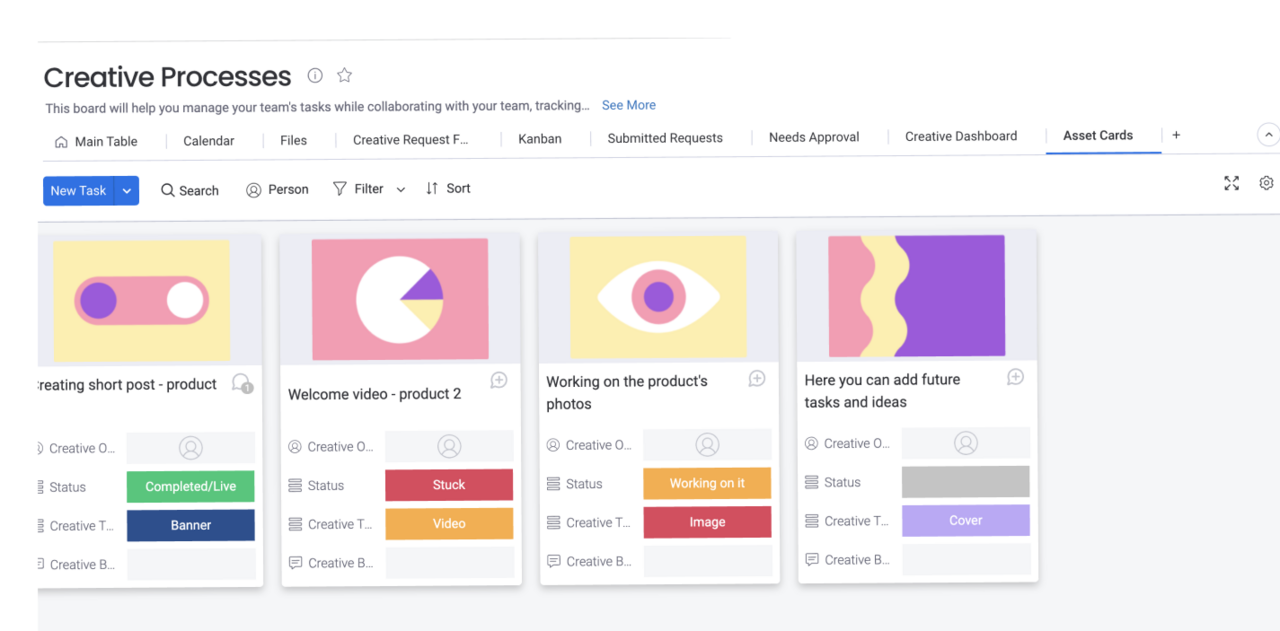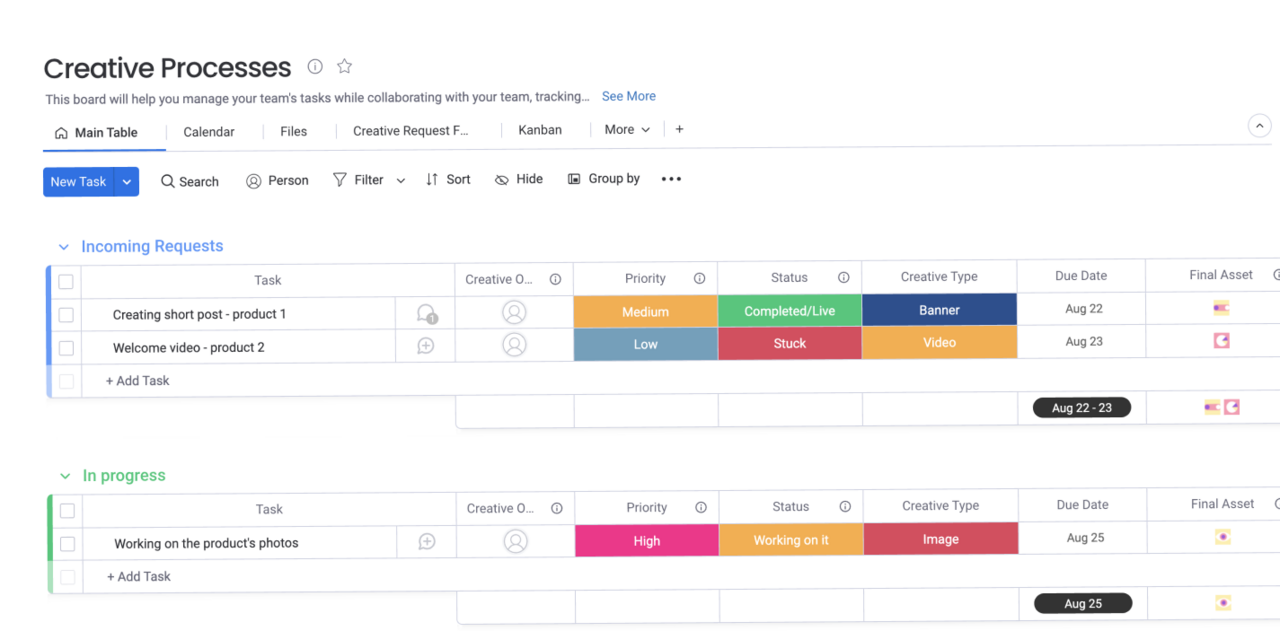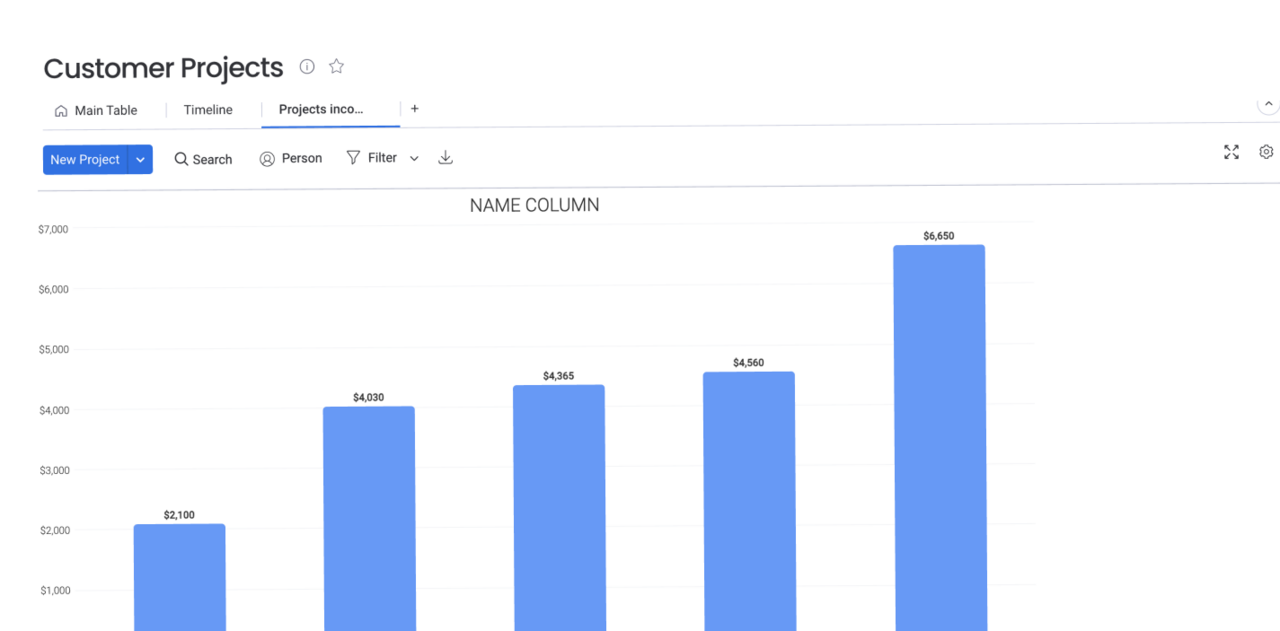In 2006, the Oxford English Dictionary added the word “google” to its contents as a transitive verb. This is the very definition — pun intended — of brand success. While Google succeeded in this regard for many reasons, it wouldn’t have penetrated the English language without paying close attention to its branding. If you’re currently branding your business or part of a marketing agency, then you know determinative and expansive the process is. A successful branding project requires rigorous documentation and creative processes.
In this guide, we’ll learn why a branding brief template is integral for keeping businesses and creative teams synchronized and in flow throughout the branding process. While we’re at it, we’ll see how monday.com facilitates the process. To start, let’s define branding brief templates.
What is a branding brief template?
A brand brief is the bedrock on which you build successful brands. It serves as both an ethos and a guide for a brand by defining business goals, company values, and the overarching vision that defines the brand. It’s also central to a brand’s creative and marketing teams as any brand assets, marketing strategy, and public relations are governed by a branding brief.
If a brand brief is the foundation of your brand, then a branding brief template is the blueprint used to create a brand with lasting impact.

A branding brief template outlines the processes needed for a successful branding project. These templates not only facilitate the creative processes that come along with branding, but they help you clarify and define the brand’s vision. In practical terms, a branding brief template provides guidance on the activities necessary for successful branding, including research, graphic design and marketing, or visually defining the brand identity. But these are only a few of the reasons why you’d want to use a branding brief template.
Why use a branding brief template?

Using a branding brief template helps to ensure that no stones are left unturned. It results in less confusion among the branding team, more clarity of brand objectives, and a compass to navigate with to secure successful branding.
Leveraging a comprehensive branding brief template gives teams and creative directors more control over the story they’re telling about their brand.Other advantages of using a branding brief template include:
- It provides process guidance: Without the guidance of a branding brief template, the creative forces at work can lead teams astray. Starting with a template helps keep teams focused on what’s important.
- Templates double as communication tools: Whether it’s for internal stakeholders or an account manager at a creative agency, branding brief templates can help communicate the necessities of a branding project, including the processes involved, tasks required, and necessary budget.
- Better process management: When teams and directors know ahead of time what processes are involved, they can better determine who should work on what activity and when. This helps a branding project flow more smoothly.
- Faster project kickoff: Using a branding brief template facilitates faster project planning. When teams know upfront what’s involved, they can start focusing on the work rather than defining a roadmap for the work to come.
Now that you know the benefits of using a branding brief template, it shouldn’t come as a surprise that many agencies that specialize in client branding projects use branding templates to facilitate processes and communicate with clients. With this in mind, let’s explore the details of a branding brief by way of an example.
What are some examples of a branding brief template?
Branding brief templates include components for collecting and creating comprehensive details about a brand’s objectives, style, attitude, and messaging. Since these briefs also include direction for a brand’s visual definition and perception, they should also include a way to define and manage creative assets. A great example of a branding brief template includes:
- A space for easily refining ideas: While the final product of a branding template is a brand brief, the creation of that brief requires a lot of time, energy, and most especially, creativity. A great template facilitates the creative stages with collaborative documentation, whiteboarding, and easy asset sharing.
- Brand values: One of the prime objectives of brand establishment is defining the core values the brand represents. A good template should give this due consideration.
- Brand and business vision: Branding templates should include processes and document templates for crafting a brand’s vision statement, mission statement, and brand promise.
- Outlines for defining brand voice: A brand’s voice is the style it uses in communicating with its audience, including how the brand presents itself in writing and other communication channels.
- Facilitation of business objectives: Building great brands is more than creativity — it’s also about balancing brand perception with business goals. A branding template outlines processes for defining target audiences, market positioning, competitive advantages, and key competitors.
As you can see, a branding brief template is incredibly robust. The creative and practical processes used in brand development are many, and a completed brand brief attests to this fact. A great brand brief isn’t a single document — it’s a set of brand guidelines, definitions, and directions a brand follows for years to come. In other words, if you want to create a great brand brief, you need a tool capable of creating the very best branding brief templates.
Branding brief templates on monday.com

Countless creative agencies and collaborative teams choose monday.com to manage their projects, and it’s especially potent when it comes to driving creativity and productivity. With monday.com, your team unlocks powerful, fully customizable task boards where every individual decides how they work while directors determine what that work is. With real-time collaboration baked in, ideas and creativity flow freely through tasks and creative documents alike. monday.com’s workdocs, for example, is the perfect place for writing a branding style guide, helping you refine, write, and rewrite brand messaging in real time.
For the visual aspects of branding, monday.com’s whiteboarding software allows creatives to sketch, jot down ideas, add colors and images, or simply present ideas to stakeholders in real time. And when it comes time to turn ideas into deliverables, monday.com’s dozens of integrations — like Adobe Creative Suite — mean everyone’s creative assets are only a click away.
Related templates on monday.com
From task management to creative processes, monday.com has dozens of templates to help you craft the perfect branding brief template for your next project. Here are just a couple of them.
Digital asset management template
Efficiently store all of your team’s creative assets with our Digital Asset Management Template. Give your team the seamless experience of keeping their creative assets in the same place they work and collaborate. Our template can hold any kind of file — if the file works with an online tool like Google Docs or Figma, teams can work on them without leaving monday.com.
Creative processes template
Whether it’s a wider branding strategy or a focused design project, defining and managing the processes involved in creative projects is important. With our Creative Processes Template, teams can plan content schedules, access creative assets, and manage their processes and tasks from a single board. And with a built-in creative request form, they can keep the creativity flowing by sending, receiving, and scheduling requests.
Frequently asked questions
If you’d like to learn more about the creative processes that drive successful branding, here are a few questions and answers to explore.
What is a creative brief?
A creative brief is a document used to define the scope and development of projects in design, marketing, copywriting, and other professional creative fields. Stakeholders and professionals usually collaborate in the development of creative briefs before a project begins to serve as a roadmap for progress and completion. Like branding briefs, many professionals use creative brief templates to kick projects off.
What is a design brief?
Like a creative brief, a design brief outlines the scope, guidelines, and details of a project. These briefs, however, focus on specific projects for design, such as visual identity, logo design, user experience, interface design, and visual advertising assets. Like other briefs, templates can help professionals at a design agency establish guidelines and focus on the early stages of design projects.
Impactful brand strategy starts with a template
It’s unlikely that the founders of Google sat down and planned to get their business name inducted into the dictionary. But they certainly considered their brand’s perception. As one of the most valuable brands in the world, it seems their consideration has paid off. Consistent creative processes, easy asset management, and powerful templates that enable you to build impactful branding strategies over the long term all start with a plan. And when it comes to creativity and branding, the best plan is one that starts with a branding brief template.

